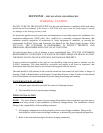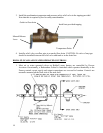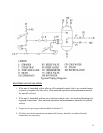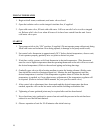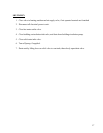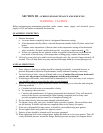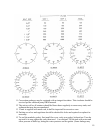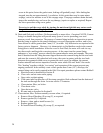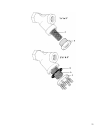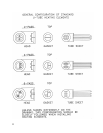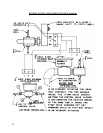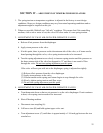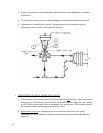
20
occur at this point, but as the gasket seats, leaking will gradually stop). After leaking has
stopped, turn the nut approximately 1 revolution. At this point there may be some miner
seepage, wait a few minutes to see if this seepage stops. If seepage continues drain the tank,
inspect the manhole ring, and cover for any damage, (repair or replace as required) Repeat
the above procedure using a new gasket.
Never try to seal the cover solely by turning the nut down tight this may cut or crush
the gasket and make sealing impossible.
16. Drain and flush tank as follows. Perform annually or more often , if required. NOTE: Cement
lining is a durable lining that will provide many years of service protecting your steel
pressure vessel from corrosion. The process of cement lining includes an inspection to ensure
that the lining is applied to the correct thickness, covers all appropriate surfaces, and is free
from defects or cracks greater than 3 mm (1/8”) in width. Any deficiencies are repaired at the
factory prior to shipment. However, it is characteristic to find hairline cracks in the cement
lining prior to initial installation. After the vessel is first filled, the water will work its way
into these cracks and begin the corrosion process. At the same time the cement lining
undergoes a “wet curing” process whereby the cement absorbs water and expands. The water
that is absorbed into the lining becomes trapped between the cement lining and the steel tank
and once the cement is fully absorbed with water, the water in contact with the steel tank
becomes deoxygenated which serves to protect the steel vessel. In addition, the cement
leaches minerals and various impurities from the water which fills and “heals” the cracks.
This “healing” together with the “wet curing” and expansion of the cement prevents any
ongoing corrosion. In the unlikely event a crack greater than 3 mm (1/8”) develops, the
cement lining can be easily repaired in the field. For repair procedures please contact Hubbell
a. Shut down unit as described in Section II.
b. Close valve on hot water outlet piping.
c. Open valve on drain piping.
d. Cold water inlet line pressure will be strong enough to flush sediment from the bottom of
the tank out through the drain. Let water run for 3-4 minutes.
e. Clean strainer filter, see below.
f. Close drain valve.
g. Open hot water valve.
h. Re-start unit as described in Section II
.
17. Clean strainer filter. Perform annually or more often , if required.
a. Remove blowoff bushing (E) or cap (F), as required.
b. Remove gasket (B), if required.
c. Remove, clean, and re-install screen (A).
d. Replace gasket (B).
e. Re-install blowoff bushing (E) or cap (F), as required.




